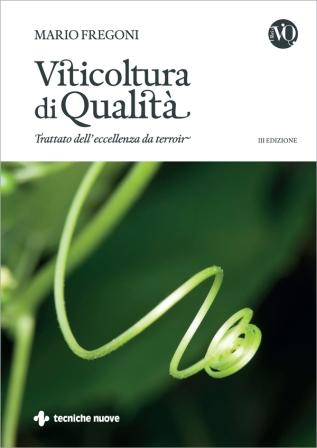17 May “The thinking heads of the vine” by M. Fregoni

“The vine has two brains. Knowing and dominating them is fundamental for obtaining quality results in viticulture. These two critical areas are at the two extremities of the plant: the vegetative and root apices. What’s more, the cells of these apices, that carry out meristematic functions (cell division, therefore growth), have recently been defined stem cells, like human or animal ones.
The two nerve centres are subjected to two opposite attractions: those of the vegetative apices of the shoots towards light (positive phototropism) and those of the root apices towards the earth’s centre (positive geotropism). The sun and the earth therefore exercise an attraction that allows photosynthesis and water and mineral absorption. It follows that management of the canopy and roots influences plant physiology and the quality of the fruit.
For example, trimming the top cuts off the vegetative apices, which multiplies the thinking heads at the top (with the production of other apices), inasmuch as the vine cannot remain acephalous. But how do the opposite apices, at the roots, respond? They cannot be pruned and multiplied, however they can be encouraged by choosing soils that allow maximum root development (double that of the canopy), especially deep down, where water absorption is more constant and mineral absorption is different to that on the surface. Surface growth of roots (wet, fertile, clayey and compact soils) is unnatural and goes against the geotropic tap-root angle.
The rupestris, with a narrow geotropic angle, has been a great rootstock, able to give lots of mineral character to the wines. The use of rootstocks with wide geotropic angles has been a mistake, caused by the need to adapt the vine to unsuitable soils. The selection of tap-rooted rootstocks could reverse the general tendency and give deeper roots. The surface roots encourage high shoot vigour and deep roots give moderate vigour and therefore quality. This basically means that the activity of the shoot apices depends on the structure and nature of the soil.
Poor, stony, loose, deep soils that allow roots to follow their natural attraction towards the centre of the earth are ideal for obtaining a balance between the root apices and shoot apices. Balanced vineyards do not need much shoot thinning – particularly top trimming – and their growth stops at veraison.
These considerations enable us to reaffirm that a suitable terroir still remains the indispensable condition for obtaining quality. In this terroir, the climate (sun) and the soil are the dominant factors in the mechanism that determine the genius loci, i.e. the nature of the place that creates the highest quality, based on the balance between the extreme thinking heads of the vine.”
We recommend you read Prof. Fregoni’s book “VITICOLTURA DI QUALITÀ” (Published by Tecniche Nuove)


